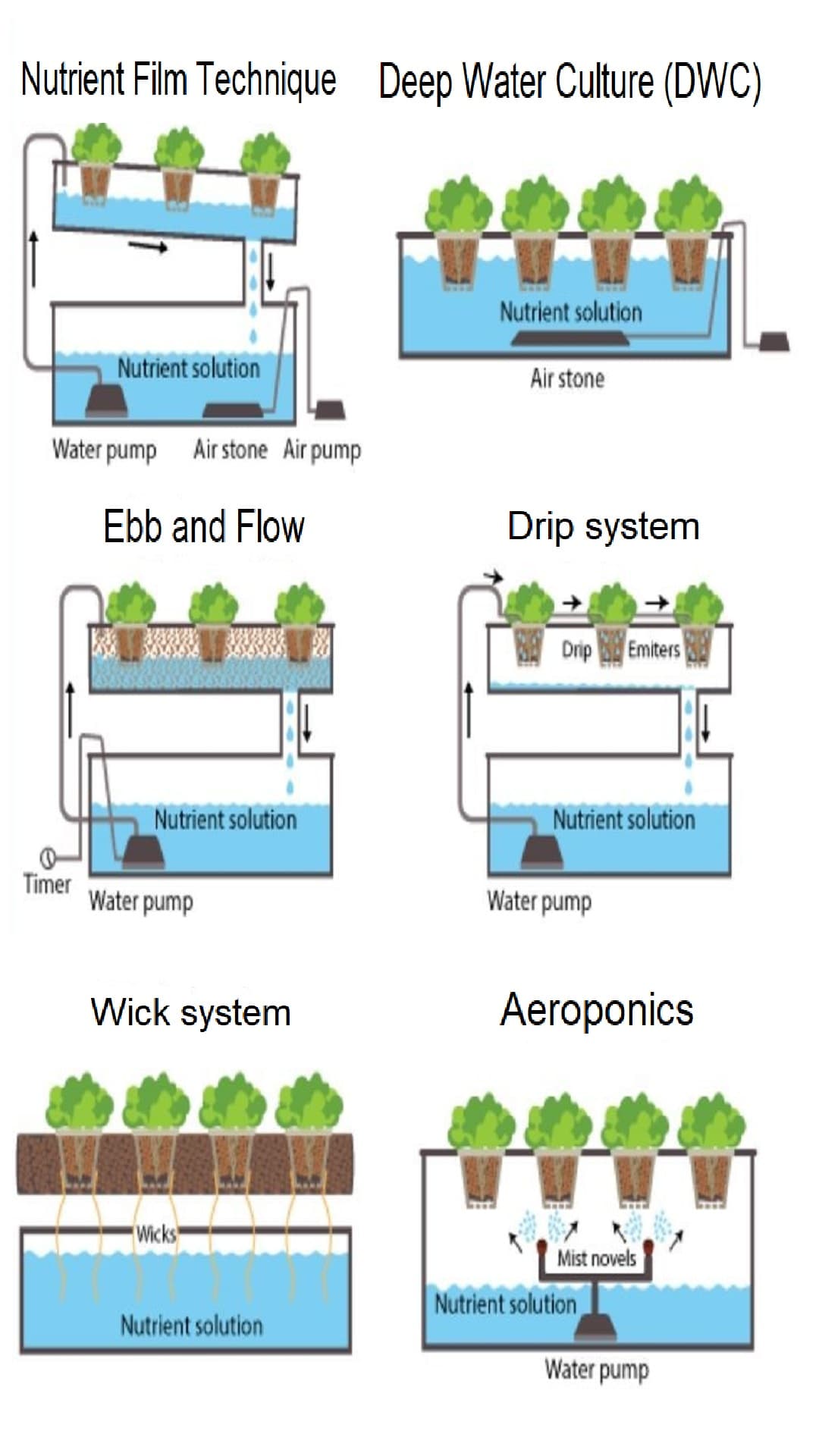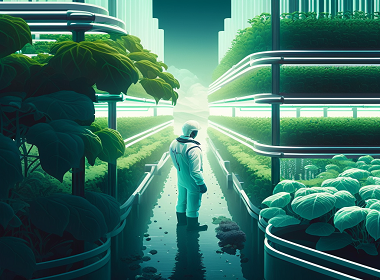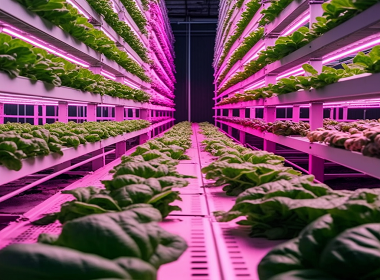Top 6 Types of Hydroponic Systems for Soilless Farming
Mar 9 2023

Hydroponic farming, also known as soilless farming, is a newer form of cultivation where plants are grown in a nutrient-rich water medium instead of soil. This article explains the six most popular types of hydroponic systems, including the Deep Water Culture System, Wick System, Aeroponic System, Nutrient-Film Technique Hydroponic System, Dutch Bucket System, and EBB and Flow System. It highlights the unique features and benefits of each system, making it an informative guide for anyone interested in hydroponic farming.
Referred to as 'Soilless farming', Hydroponic Farming is a kind of farming where cultivation is processed in water instead of soil. As the title itself suggests, usage of soil is absent in the entire activity, and nutrition is provided through the water medium. A comparatively newer kind of farming, hydroponics can be further divided into 6 popular types of hydroponic systems.
1. DEEP WATER CULTURE SYSTEM
One of the most common and easy-to-use types of hydroponic systems, the Deep Water Culture System is a system wherein a foamy platform holds the saplings still. This foamy platform is kept afloat on the medium surface and poured into a large tank. The solution dissolved in the water is loaded with nutrition that is vital for the crops' growth. Plants like lettuce which require more water and are rapid-growing plants are preferred for such a system. While all the essential nutrition is present inside the water medium, oxygen is supplied through a pump that pumps air into the water, creating bubbles. The liquid of the tank is changed after every 5-10 days. The roots of the crops are kept standing as this stagnation helps the nutrients to reach out to the roots directly. Also known as the Standing Aerated Nutrient Solution, this type is efficient and easy to manage among the rest of the other types of hydroponic systems.
2. WICK SYSTEM
Said to be the easiest one out of all types of hydroponic systems, the Wick hydroponic system involves no movement. Herein, a plant tank is kept above the reservoir tank, and the two are placed together so as to keep the crops in the plant tank and the liquid medium in the other one. The reservoir tank consists of 2 wicks that transport the nutrients into the plant tank by absorbing the liquid solution. Called the WICK HYDROPONIC SYSTEM, this type is simple, easy to manage, and efficient. Although the wick in the reservoir tank is supplied with nutrition 24×7, still the crops that consume a lot of water may face a shortage of water. This is because the wick can absorb the liquid medium too soon, making it difficult for the cultivator to refill again and again.
3. AEROPONIC SYSTEM
Utilizing air as the sole medium for triggering the growth of crops, the aeroponic system is said to be one of the most advanced types of hydroponic systems. A channel of nozzles releasing mist loaded with vital nutrition is set up so that the roots can intake the nutrients. Such a channel of nozzles opens up at the root of every crop so that the former does not have to spread in search of nutrition. This system is distinct from the above-mentioned types of hydroponic systems which set the plants free in a water solution. The cost value of this system is slightly expensive as an extensive channel is set up in order to cultivate crops. The aeroponic system also eliminates the risk of plants catching pest infections or fungal infections due to the presence of water or soil.
4. NUTRIENT-FILM TECHNIQUE (NFT) HYDROPONIC SYSTEM
Similar to the aeroponic type yet largely different, the Nutrient-Film Technique is the 4th among all types of hydroponic systems. This system includes a horizontal line of plants that are provided with nutrition through a channel of pipe extending to the roots of each crop. Apart from the plant tank, there is also a reservoir tank that helps in draining the excess water when the plant tank gets full. The water pump attached to the reservoir tank pumps the water into the plant tank again. This ensures that no wastage of water takes place and that it is reused. The Nutrient-Film Technique can be further divided into 2 sub-types:
- HORIZONTAL NFT SYSTEM: The horizontal NFT system follows a pattern of horizontal placement of a cross that accesses nutrition through a channel of pipe set in a horizontal manner. A tank is used to do the same.
- VERTICAL NFT SYSTEM: The vertical NFT system follows a pattern of vertical placement of plants that access nutrition through a channel of pipe set in a vertical position. A multi-storeyed structure holds the plants that are connected to a single channel.
5. DUTCH BUCKET SYSTEM
Quite obvious from the title itself, the Dutch Bucket System is yet another from the list of the types of hydroponic systems that are practiced on a wide basis. Under this system, crops grow while placed in bato/ dutch buckets. These dutch buckets are put together in a horizontal line where two pipes namely, the drain pipe and drip pipe are attached to each of these buckets. The drip pipe carries the nutrition from a reservoir tank to all the crop buckets. Whereas, the drain pipe attached underneath the buckets, carries the drained liquid back to the reservoir tank. This system is quite efficient as it uses the liquid medium in a rotating cycle. Also one of the most advanced types of hydroponic systems, this is preferred for growing vine plants like cucumbers, tomatoes, and peppers.
6. EBB and FLOW SYSTEM
In a recovery farming system, the EBB and Flow system consists of a water pump that operates as per a timer. Using the flood and drain technique allows the plant tank to be filled with the water medium till the timer lets it drain the same in the reservoir tank. This system is versatile as it works well for various media like gravels, small pebbles, or granular stones. The plants grow well and avail of adequate nutrition as per their requirements. Dependent on the continuous supply of electricity, such a system can have numerous drawbacks that make it a complicated system altogether. Still, it is one of the widely practiced types from all around the world.
The several types of hydroponic farming use less space, fewer chemical components, and ensure better productivity of crops. That said, it is evidently a better system of farming considering the emerging situations in the current scenario- climate change and increased national calamities.
Hydroponic systems soilless farming cultivation water medium Deep Water Culture System nutrition lettuce Standing Aerated Nutrient Solution Wick hydroponic system wick reservoir tank Aeroponic system air medium channel of nozzles Nutrient-Film Technique (NFT) hydroponic system horizontal line of plants vertical placement of plants Dutch Bucket System bato/dutch buckets vine plants EBB and Flow system flood and drain technique water pump pebbles granular stones


